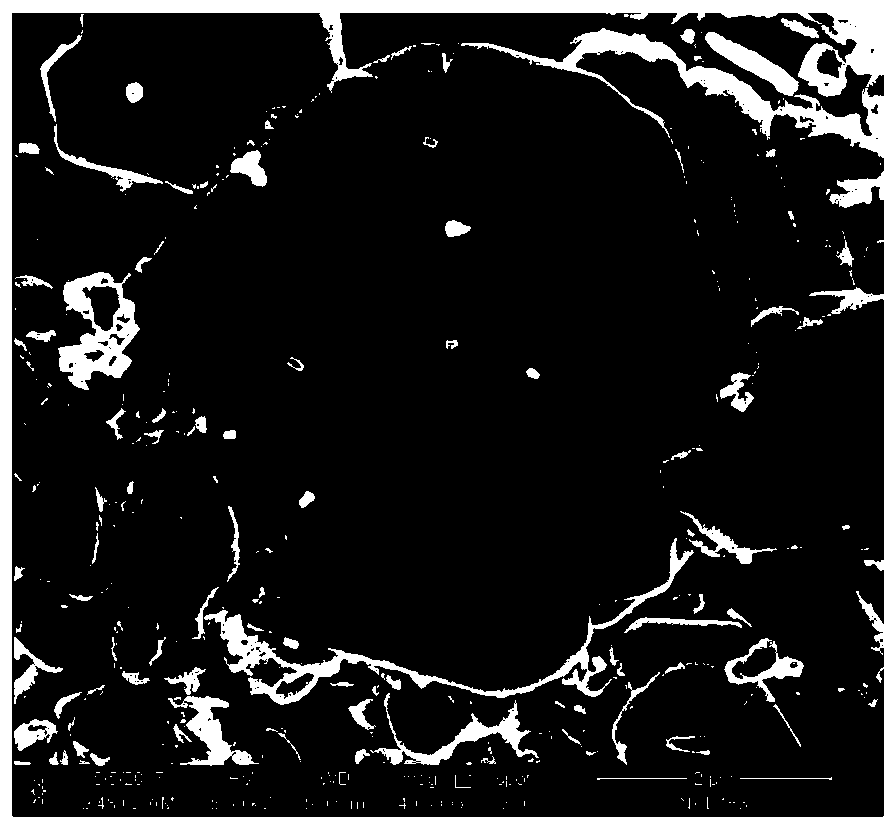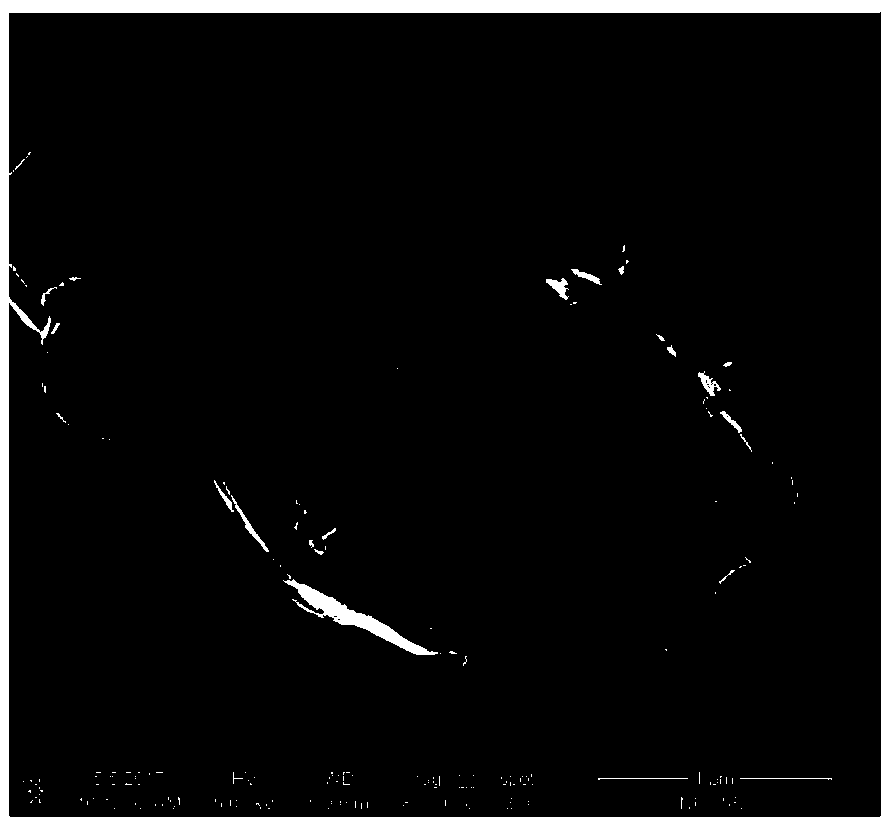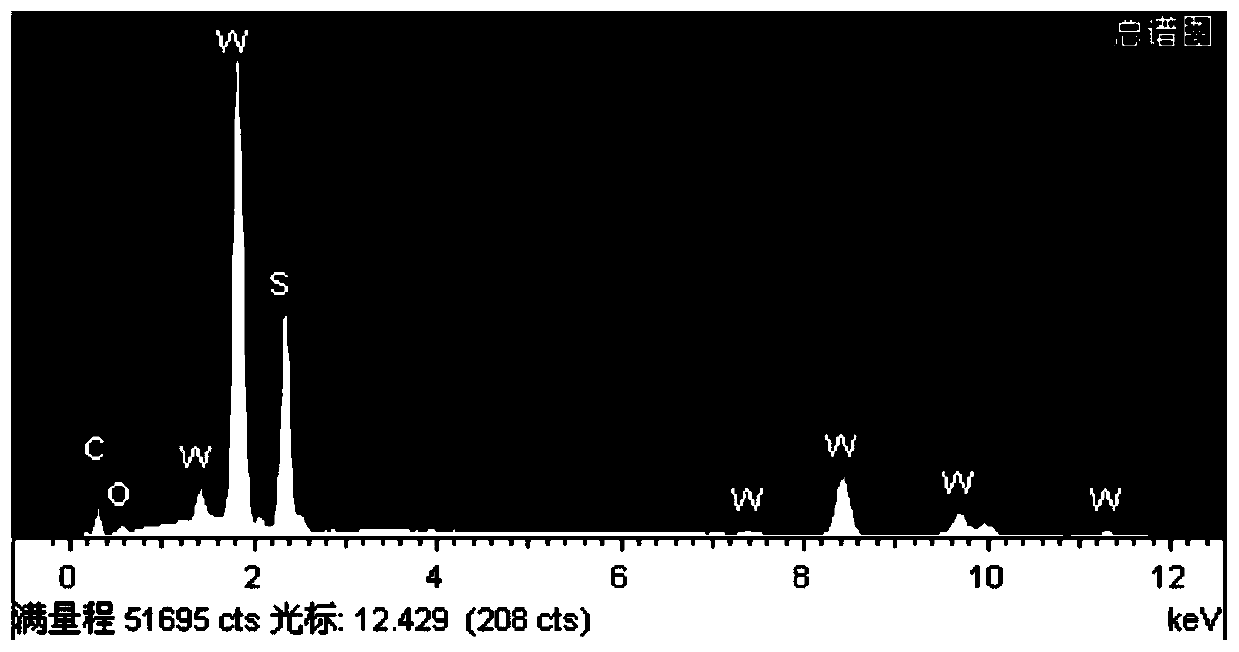A novel ammonia gas sensor based on reduced graphene oxide-tungsten disulfide composite material and its preparation process
A gas sensor, tungsten disulfide technology, applied in the direction of material resistance, material analysis, material analysis through electromagnetic means, etc., can solve the problems of less research on gas sensitivity response, unstable signal, low response, etc., and achieve good gas sensitivity Response, improved stability and service life, reduced aging effects
- Summary
- Abstract
- Description
- Claims
- Application Information
AI Technical Summary
Problems solved by technology
Method used
Image
Examples
Embodiment 1
[0041] This implementation provides a new type of ammonia gas sensor based on reduced graphene oxide-tungsten disulfide composite material and its preparation process, including a gas-sensing composite material and a sensor substrate. Among them, the composite material is also a new original graphene oxide-tungsten disulfide composite material (as shown in Figure 1, Figure 2, Figure 3), which is characterized in that the reduced graphene oxide-tungsten disulfide composite material is a new type of synthetic lamellar gas sensitive material , prepared by one-step heating method, has good response characteristics to low concentration ammonia gas, for example, to 30ppm ammonia gas, the gas sensitivity response Rs of the composite material at room temperature (20°C-30°C) is about 50. For the sensor substrate, the characteristic is that the thickness of the sensitive material coating is 0.4-0.5mm, and the transient heating plate is attached to the back of the ceramic substrate of the...
Embodiment 2
[0050] The difference between the technical solution of this embodiment and Embodiment 1 is that the concentration of the test gas is different. This embodiment only describes the different parts, and the same parts will not be repeated. The test gas NH of this embodiment 3 , The test concentration is 10ppm, 20ppm, 30ppm, 40ppm, 50ppm. Figure 6 Response signal Rs of the reduced graphene oxide-tungsten disulfide composite to different concentrations of ammonia.
PUM
| Property | Measurement | Unit |
|---|---|---|
| thickness | aaaaa | aaaaa |
Abstract
Description
Claims
Application Information
 Login to View More
Login to View More - R&D
- Intellectual Property
- Life Sciences
- Materials
- Tech Scout
- Unparalleled Data Quality
- Higher Quality Content
- 60% Fewer Hallucinations
Browse by: Latest US Patents, China's latest patents, Technical Efficacy Thesaurus, Application Domain, Technology Topic, Popular Technical Reports.
© 2025 PatSnap. All rights reserved.Legal|Privacy policy|Modern Slavery Act Transparency Statement|Sitemap|About US| Contact US: help@patsnap.com



